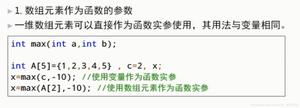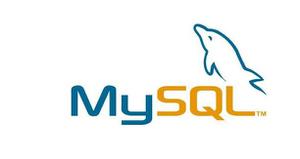了解C#中的协变和逆变接口
我在使用C#阅读的教科书中遇到了这些问题,但是由于缺乏上下文,我很难理解它们。
关于它们是什么以及它们对外部有用的内容有一个很好的简洁解释吗?
编辑以澄清:
协变介面:
interface IBibble<out T>.
.
换向接口:
interface IBibble<in T>.
.
回答:
使用<out T>,您可以将接口引用视为层次结构中的向上引用。
使用<in T>,您可以将接口引用在层次结构中视为向下。
让我尝试用更多的英语术语进行解释。
假设您正在从动物园中检索动物清单,并且打算对其进行处理。所有动物(在您的动物园中)都有一个名称和一个唯一的ID。有些动物是哺乳动物,有些是爬行动物,有些是两栖动物,有些是鱼,等等,但它们都是动物。
因此,在您的动物列表(其中包含不同类型的动物)中,您可以说所有的动物都有一个名字,因此显然可以很容易地获得所有动物的名字。
但是,如果仅列出鱼类,但需要像对待动物一样对待鱼类,那行得通吗?直观上讲,它应该可以工作,但是在C#3.0及更低版本中,这段代码将无法编译:
IEnumerable<Animal> animals = GetFishes(); // returns IEnumerable<Fish>这样做的原因是,在检索到动物集合之后,编译器不会“知道”您的意图或 可以
做什么。就其所知,可能有一种方法IEnumerable<T>可以将对象放回列表中,这有可能使您将不是鱼类的动物放入应该只包含鱼的集合中。
换句话说,编译器不能保证不允许这样做:
animals.Add(new Mammal("Zebra"));因此,编译器完全拒绝编译您的代码。这就是协方差。
让我们看一下方差。
由于我们的动物园可以处理所有动物,因此它当然可以处理鱼,所以让我们尝试向我们的动物园添加一些鱼。
在C#3.0和更低版本中,这不会编译:
List<Fish> fishes = GetAccessToFishes(); // for some reason, returns List<Animal>fishes.Add(new Fish("Guppy"));
在这里,即使该方法仅仅因为所有鱼都是动物而返回,编译器仍 可以 允许这段代码:List<Animal>因此,如果我们只是将类型更改为此:
List<Animal> fishes = GetAccessToFishes();fishes.Add(new Fish("Guppy"));
这样就可以了,但是编译器无法确定您不是要这样做:
List<Fish> fishes = GetAccessToFishes(); // for some reason, returns List<Animal>Fish firstFist = fishes[0];
由于列表实际上是动物列表,因此不允许这样做。
因此,反方差和协方差就是您如何处理对象引用以及如何使用它们。
C#4.0中的inand out关键字专门将接口标记为一个或另一个。使用in,您可以将通用类型(通常为T)放置在 input
-positions中,这意味着方法参数和只写属性。
使用out,您可以将泛型放置在 输出 位置,即方法返回值,只读属性和out方法参数。
这将使您可以执行与代码有关的操作:
IEnumerable<Animal> animals = GetFishes(); // returns IEnumerable<Fish>// since we can only get animals *out* of the collection, every fish is an animal
// so this is safe
List<T> 在T上同时具有入向和出向,因此它既不是协变也不是反变,而是一个允许您添加对象的接口,如下所示:
interface IWriteOnlyList<in T>{
void Add(T value);
}
将允许您执行以下操作:
IWriteOnlyList<Fish> fishes = GetWriteAccessToAnimals(); // still returns IWriteOnlyList<Animal>
fishes.Add(new Fish("Guppy")); <-- this is now safe
这是一些展示概念的视频:
- 协方差和协方差-VS2010 C#Part 1 of 3
- 协方差和协方差-VS2010 C#Part 2 of 3
- 协方差和协方差-VS2010 C#第3部分,共3部分
这是一个例子:
namespace SO2719954{
class Base { }
class Descendant : Base { }
interface IBibbleOut<out T> { }
interface IBibbleIn<in T> { }
class Program
{
static void Main(string[] args)
{
// We can do this since every Descendant is also a Base
// and there is no chance we can put Base objects into
// the returned object, since T is "out"
// We can not, however, put Base objects into b, since all
// Base objects might not be Descendant.
IBibbleOut<Base> b = GetOutDescendant();
// We can do this since every Descendant is also a Base
// and we can now put Descendant objects into Base
// We can not, however, retrieve Descendant objects out
// of d, since all Base objects might not be Descendant
IBibbleIn<Descendant> d = GetInBase();
}
static IBibbleOut<Descendant> GetOutDescendant()
{
return null;
}
static IBibbleIn<Base> GetInBase()
{
return null;
}
}
}
没有这些标记,可以编译以下内容:
public List<Descendant> GetDescendants() ...List<Base> bases = GetDescendants();
bases.Add(new Base()); <-- uh-oh, we try to add a Base to a Descendant
或这个:
public List<Base> GetBases() ...List<Descendant> descendants = GetBases(); <-- uh-oh, we try to treat all Bases
as Descendants
以上是 了解C#中的协变和逆变接口 的全部内容, 来源链接: utcz.com/qa/398874.html







